Best keyboards for Mac 2025
Get to clickety-clacking on the best keyboards for Mac.
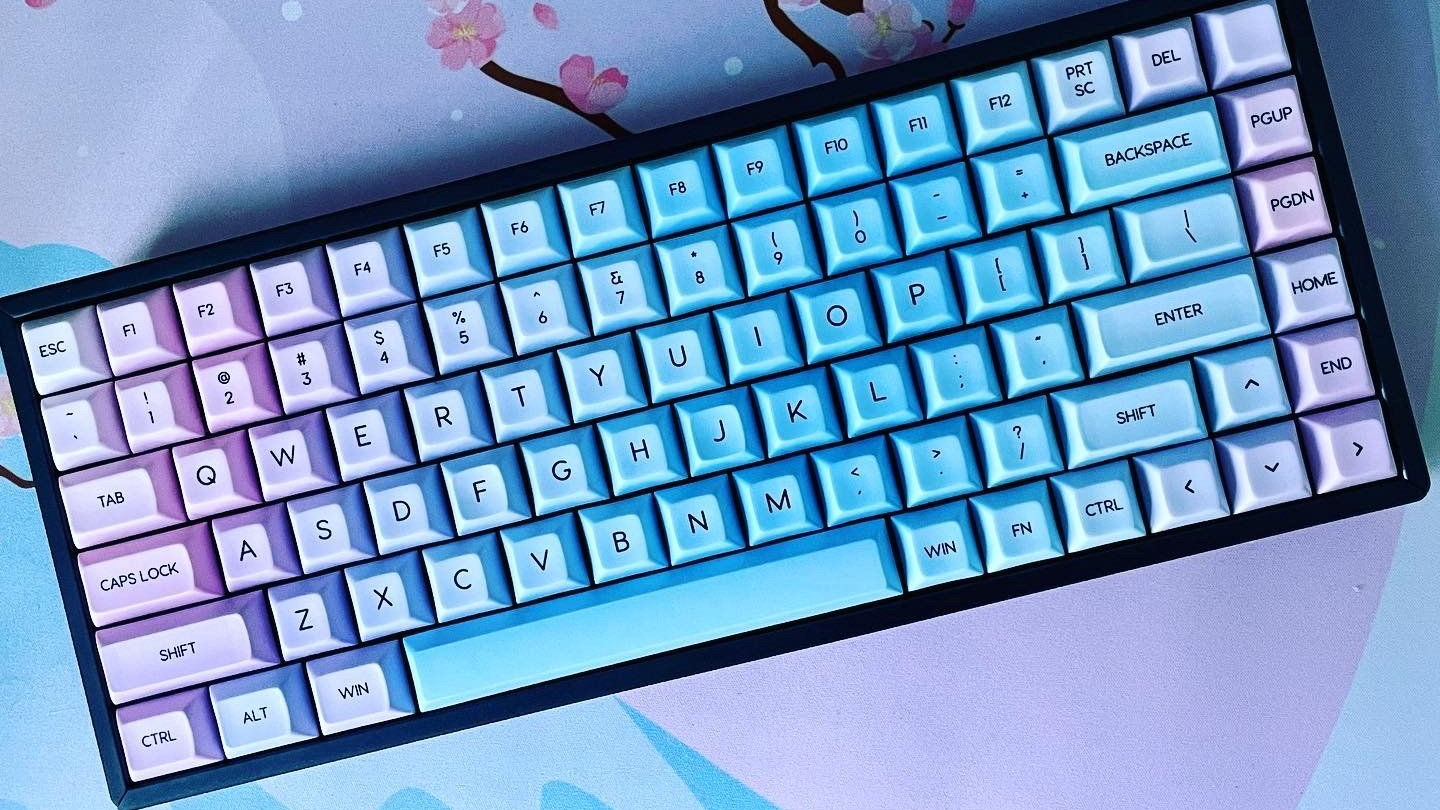
Many people work with a Mac, and usually, a lot of typing is involved. That means a lot of clicking and clacking away all day long. While you may be fine working with just whatever default keyboard your Mac came with, there are also many other options out there, from low-profile boards like Apple's Magic Keyboard to mechanical keyboards with the good clickity-clack feel. Keyboards are subjective, but having the right one can make all the difference in the world when it comes to feeling productive while also having comfort. Here are the best keyboards for Mac that you can get right now.
What are the best keyboards for Mac that you can buy right now?
You can always trust iMore.
If you're looking for the best keyboard to pair with one of the best Mac computers, it's hard to go wrong with the Apple Magic Keyboard. After all, this keyboard is designed by Apple and works great with your Mac, whether it's a desktop like a Mac mini or MacBook Pro on a great laptop stand. And since it's from Apple, the F-row keys should all work without issue, which may not be the case with other third-party keyboards. Plus, according to your needs, you can get a compact or full-size version, and the Magic Keyboard has a lightweight footprint.
For those who want something like the Magic Keyboard but want more flexibility and customization, then Logitech's MX Keys is the way to go. This is very similar to the Magic Keyboard, except it comes in a sleeker gunmetal color with black keys, and you can customize certain keys to do specific functions in your most-used apps. It also pairs particularly well with the Logitech MX Master 3 mouse, my go-to mouse.
Logitech also makes a great budget keyboard, the K380, which retains the laptop-style typing experience. But the keys are circular with a slight curvature, making it even more comfortable. It's also rechargeable with a two-year battery life since it lacks backlighting and can pair up to three devices.
Those who want to check out the best mechanical keyboard experience for Mac should consider the Keychron K2V2 if requiring something compact or the Keychron K4V2 for a full-size board with a number pad. Keychron is an excellent introduction to mechanical keyboards. Most of the company's options include Bluetooth wireless connectivity with up to three devices, backlight options, multi-platform compatibility with Windows and Android, and three switch options. And since these are traditional-style mechanical keyboards, you can easily customize your board by changing out the keycaps with most keycap sets available on the market.
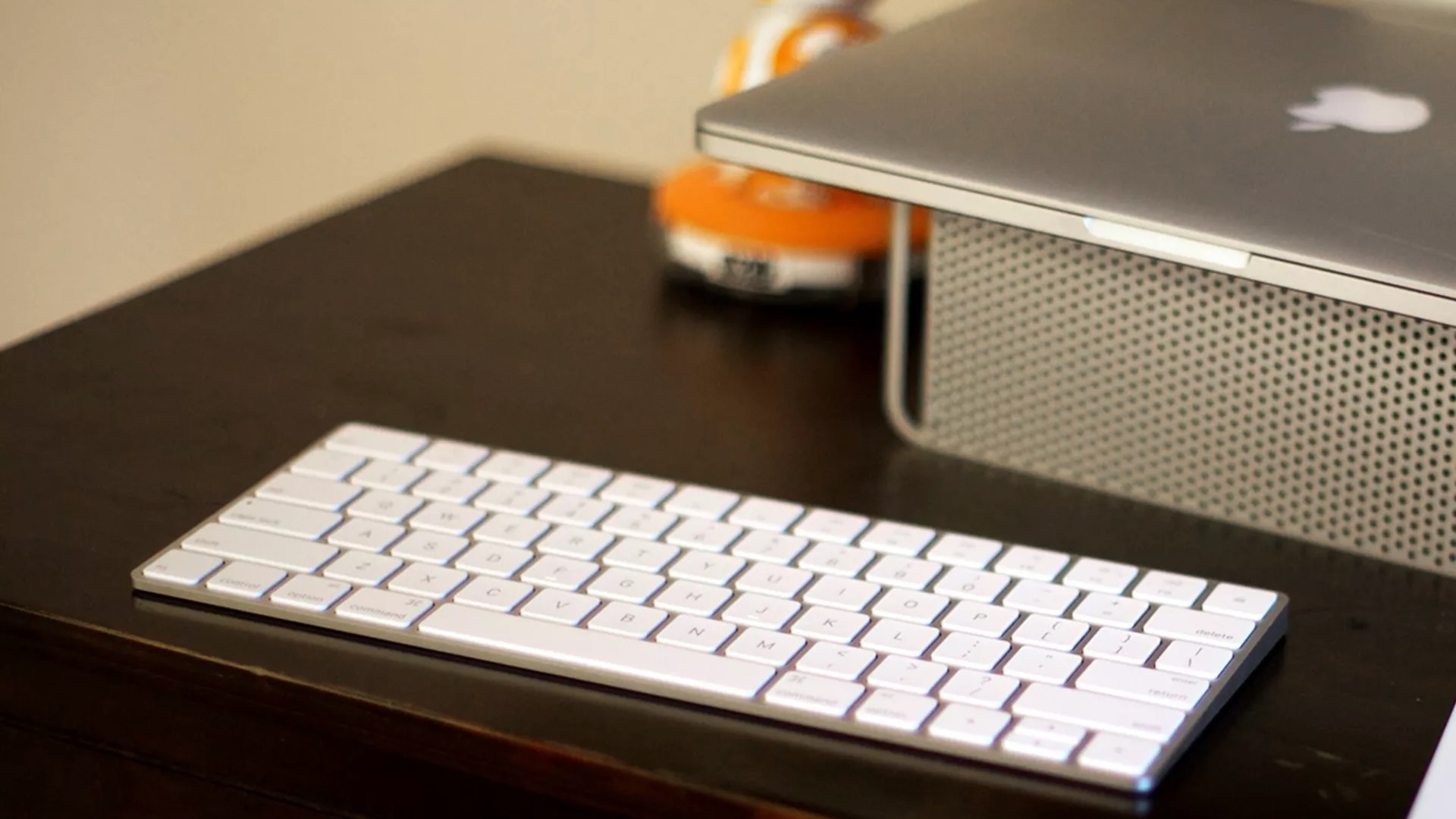
Bottom line: Apple's Magic Keyboard works flawlessly with your Mac and has a minimal footprint. Plus, it comes in a compact or full size, depending on your needs.
The Apple Magic Keyboard is the best overall pick for any Mac user, as long as they can deal with the quietness of the keys and don't prefer the tactile feeling of a mechanical one. And since the Magic Keyboard is from Apple, it works flawlessly with any Mac, be it your Mac mini, iMac, or even a MacBook.
With the Magic Keyboard, you're getting a low-profile, lightweight, and slim, so it has a minimal footprint on your desk. And due to the low-profile design, it's quiet so that you won't bother everyone else around you. It charges via Lightning but connects via Bluetooth and has over a month of battery life since it's not backlit.
There are also two sizes for the Magic Keyboard: Compact and Full, so you can choose the one that suits your needs. For those who don't necessarily need a number pad, the Compact is $30 less, so you can save some dough. But if you do a lot of data entry or calculations, having the number pad is an option, though for slightly more. The full-size keyboard also comes in Space Gray for somewhat more and includes Touch ID in both colors.
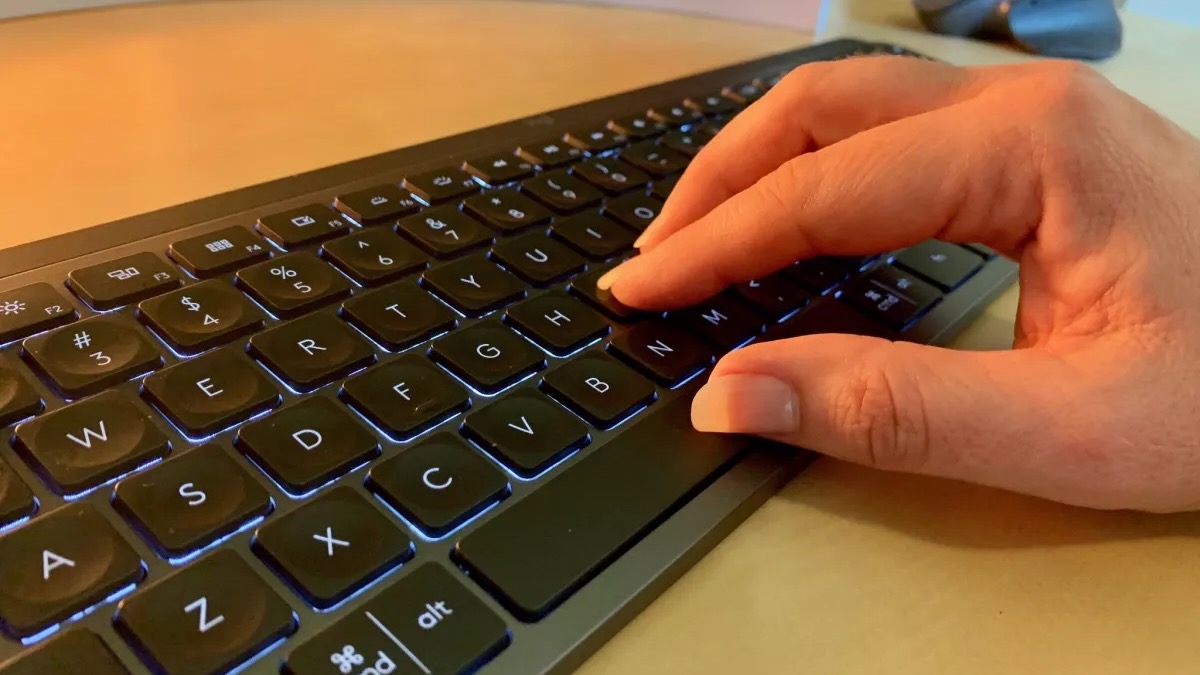
Bottom line: The MX Keys is similar to the Magic Keyboard, but users can customize the F-row keys by remapping them to whatever they want. It also has smart backlighting and a slight groove on every key for comfort.
If you're looking for something like the Magic Keyboard but better, look no further than Logitech's MX Keys. This is kind of like the Magic Keyboard if it were on steroids.
The MX Keys only come in one size, including the number pad. So if you need a number pad for data entry, this keyboard is a no-brainer, and it's actually at least $59 cheaper than Apple's Magic Keyboard with Number Pad. Every key on the MX Keys has a nice curvature, making it feel more comfortable and ergonomic while you type away. Another thing that sets it apart from the Magic Keyboard is the fact that there is backlighting on the MX Keys. The backlight is also ambient, so it automatically adjusts based on how much light is in the room. Of course, you can turn off the backlighting to extend the battery life from about 10 days to five months.
As mentioned earlier, the real magic with the MX Keys is the customization. With the Logi Options software, users can remap any of the F-row, as well as the special calculator/screenshot/lock/lookup keys, to something that they find more useful. However, the Logi Options software is required to do this, so you'll have to download it if you want to remap keys.
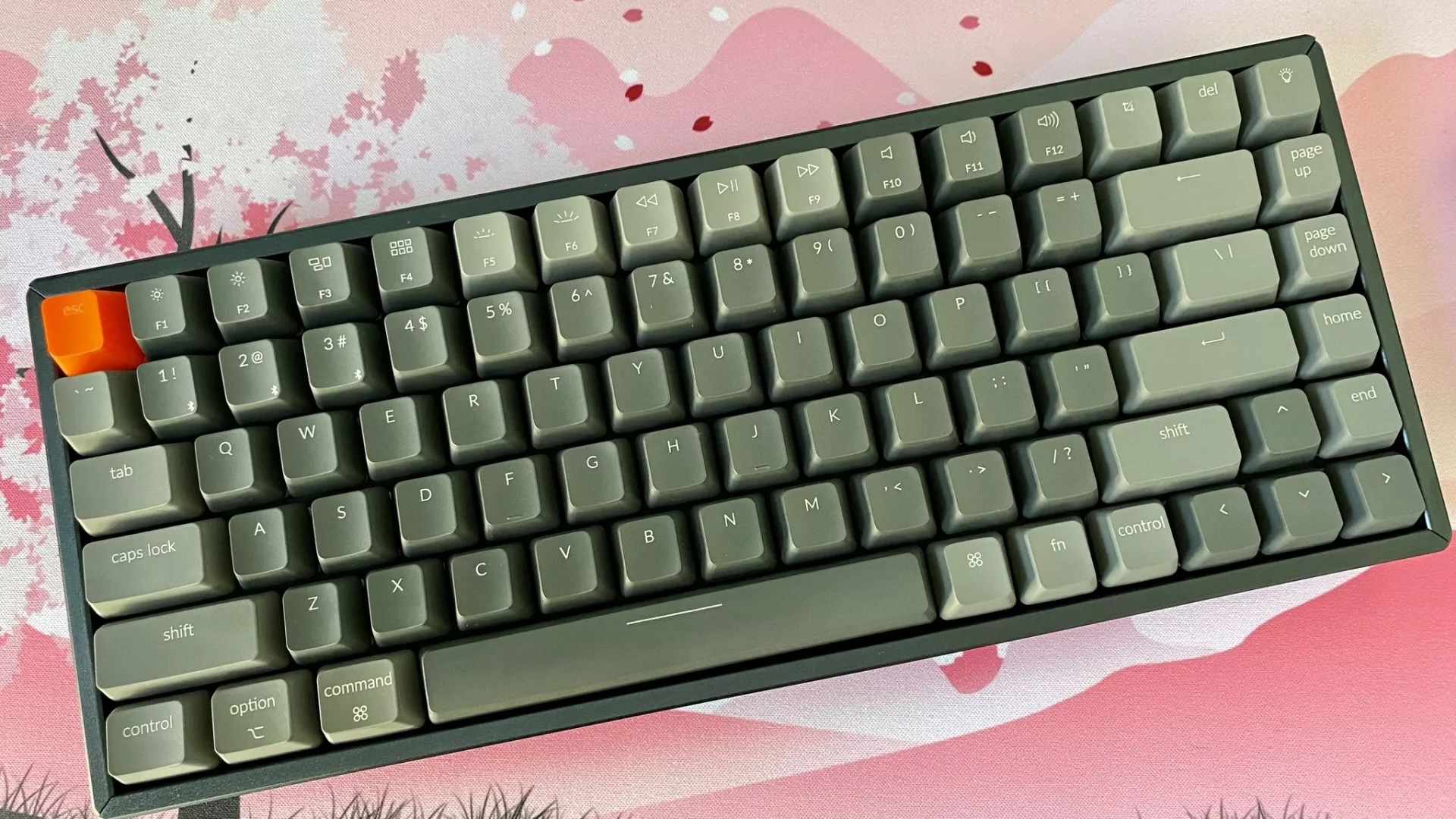
Bottom line: Keychron's mechanical keyboards are Mac-centric and affordable compared to other options. You can choose between white or RGB backlighting and three different switch types. K2 is a compact 75% layout, while the K4 is a robust 96% layout with a number pad. There are other models and designs, but these two are the most popular.
Keychron is a famous brand for affordable mechanical keyboards because mechanical keyboards can be pretty expensive. Keychron offers decent mechanical boards that are great for starting in the hobby, and you also have quite a few options to choose from.
The Keychron K2, it's a 75% layout, so it's a reasonably compact board, allowing you to free up some desk space for your mouse and other things. Since Keychron is a very Mac-centric keyboard, you get full F-row functionality as you'd expect for a Mac, but some toggles allow you to switch to Windows/Android mode if need be, and they provide corresponding keycaps (Alt and Win). The 75% layout still has the Home/End, Page Up/Down, and arrow keys in the bottom right, but they're next to each other, allowing the smaller overall size.
However, if you need a number pad, then the Keychron K4 is probably what you want. It is a full-size board in a 96% layout, so it's still slightly smaller than a full size while offering the same functionality. In addition, there are no empty spaces between the Home/End, Ins/Del, Page Up/Down, arrow keys, and number pad — everything is next to each other to conserve space.
Both the Keychron K2 and K4 have hot-swap versions, which means you can change out the switches from the default Gateron Red, Blue, or Browns that you choose when purchasing. If you get a non-hot swap version, you'll have to de-solder the switches and solder new ones if you want to try something else. By default, Gateron Reds are linear and silent with the least actuation force. Gateron Browns are a tactile middle ground that isn't too loud but has a nice bump to them; Blues are loud, super clicky switches. The Browns are the most popular choice for beginners.
The Keychron K2 and K4 come in your choice of white or RGB backlighting, with the RGB option also having an aluminum frame. Unfortunately, the aluminum frame is only available with the RGB version, and it's technically not an aluminum body, just a frame attached around the standard plastic chassis. The USB-C port is on the left side of most Keychron boards, like the K2 and K4, and they give you a removable USB-C cable with an "L" shaped end. You may need an "L" adapter if you want to use a custom-coiled aviator cable or something for desk aesthetics.
Finally, the only real negative with Keychron is that no software right now allows you to remap the keys as you see fit — you're stuck with the default programming for macOS/iOS and Windows/Android. And if the K2's 75% or K4's 96% layout doesn't work for you, Keychron offers several other models with different configurations, from the 60% K6 to tenkeyless (TKL) K8 to the full-size, wired C2. And watch out when getting keycap sets; since Keychron uses a non-standard 1.75u right shift, it may be hard to find locations that can cover that.
If you want a premium Keychron keyboard that is also customizable with VIA/QMK, you'll want to look at the Q-series, like the Keychron Q1 (75%) and Keychron Q2 (65%). These versions also come with rotary knobs you can customize and call your own. However, they also have a significantly higher price tag than the K-series and C-series boards.
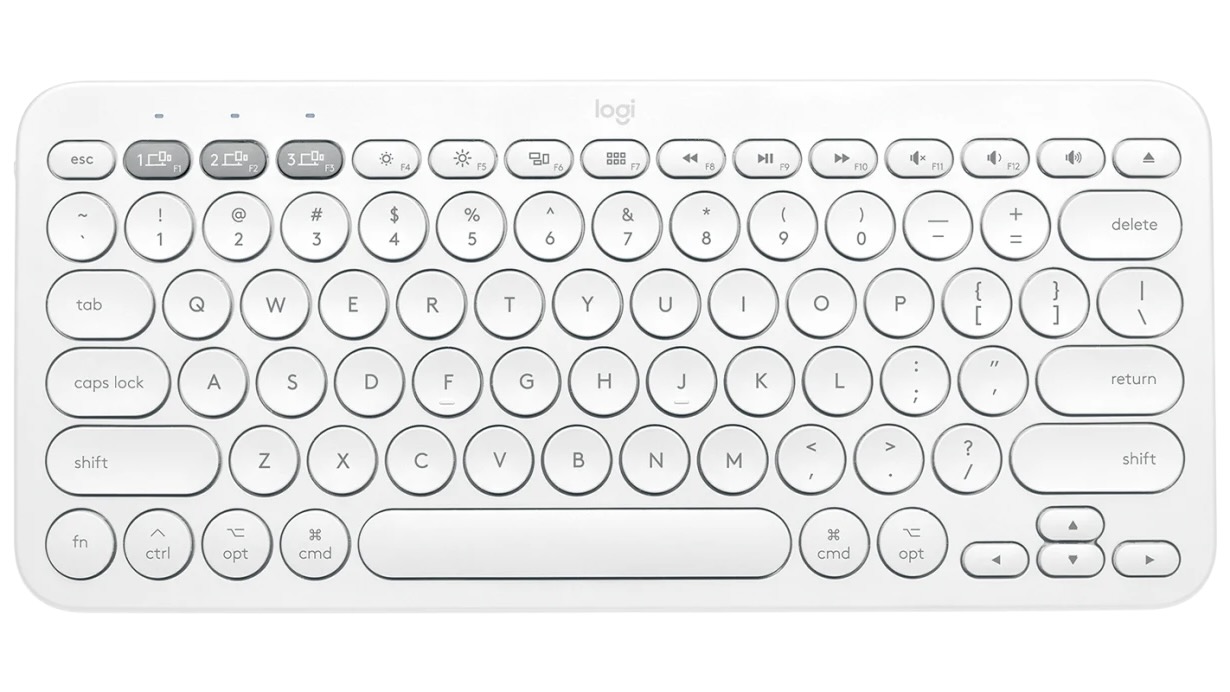
Logitech K380
Bottom line: The Logitech K380 is a super affordable wireless keyboard that's also slim and lightweight. It can pair with up to three devices through Bluetooth, and the keys are circular with a slight curvature for ergonomic comfort.
If you're on a budget but want to pick up one of the best keyboards for Mac, or even iPhone and iPad, then you should not sleep on the Logitech K380. This super compact and lightweight low-profile keyboard is perfect for portability and is fully compatible with macOS and iOS. Still, you can also use it with PCs and Android devices.
The K380 connects via Bluetooth, and though it doesn't recharge itself and requires two AAA batteries, it has a fantastic battery life of two years — yes, you read that correctly! Once you pop in two good AAA batteries, the K380 will last you around two years on just those two batteries. It can connect with up to three devices, and switching between them is super easy. And the keyboard can detect when it's not being used, so it automatically goes to standby mode, or you can turn it off entirely with the power button.
And while most low-profile, laptop-style keys are flat, the K380 keys are circular with a slight groove. This makes it comfortable to type on and fairly ergonomic for your fingers. It also comes in a handful of colors and designs, so you can pick whichever suits your setup the best.
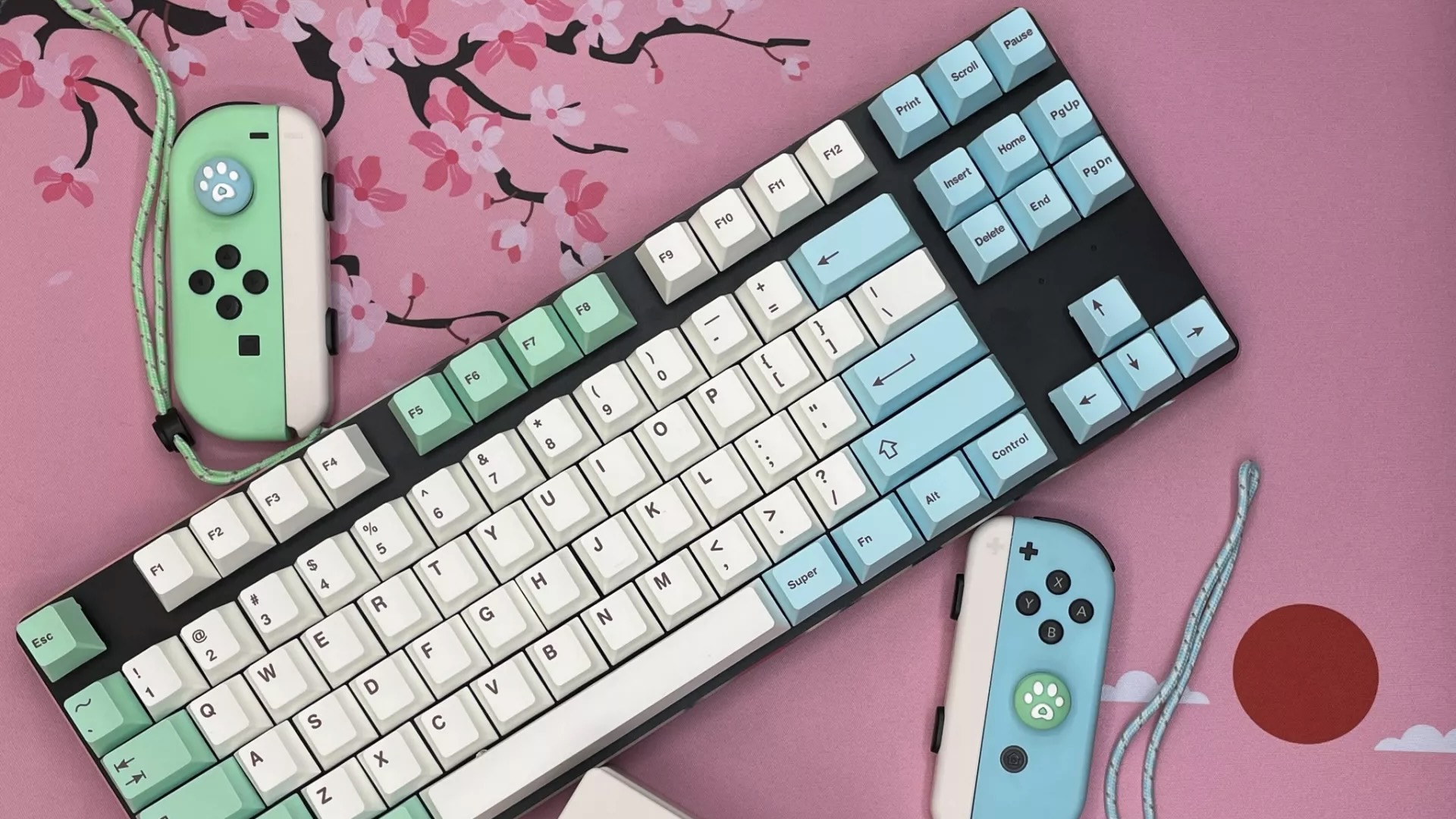
Bottom line: The GMMK comes in three sizes for your needs, and you can choose to build it yourself or go with a prebuilt option with Gateron Brown switches. No matter which you choose, they're all hot-swappable so that you can customize the switches later.
Another good introduction board for mechanicals is the Glorious GMMK. With the GMMK, you get three size options: Compact 60%, Tenkeyless (TKL), and Full Size, all of which are standard. You can also choose whether you want a Barebones Edition or Prebuilt — the former is cheaper, but you'll need to provide your switches and keycaps. Prebuilt is slightly more, but you'll get Gateron Browns and Glorious' basic ABS keycaps in black or white, depending on the color keyboard you choose.
The Glorious GMMK has a solid, aluminum body that is pretty slim and sits lower than the Keychron, so you may not need a wrist rest. There is no frame around the keys, which means easier cleaning when required. All versions of the GMMK are also hot-swappable so you can change the switches at any time. And it's compatible with almost all buttons out there, which usually have Cherry MX stems, and the keys are standard size, so all keycap sets should fit.
While Glorious has software to help you customize the board, it's only available on PC. And while the Compact and TKL sizes have a removable USB cable, so you can use an excellent coiled aviator cable if you want, the Full Size doesn't give you that luxury.
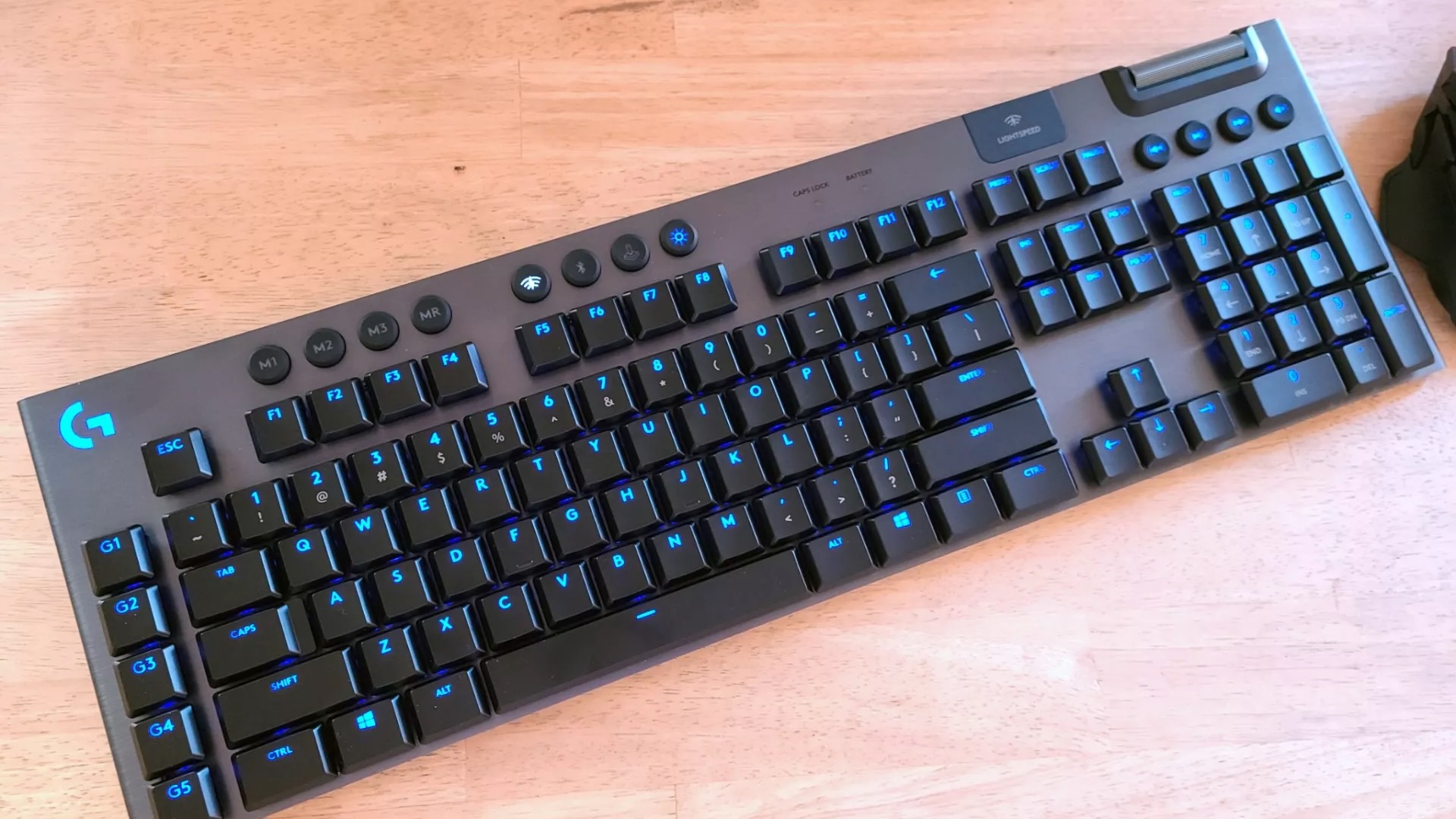
Logitech G915 Lightspeed
Bottom line: The G915 Lightspeed is one of the best gaming keyboards. With low-profile mechanical keys, dedicated media controls, RGB, macros, and separate profiles, you're getting everything you need — and it's all customizable in Logitech's G Hub software.
If you want a little gaming on your Mac (but that's best reserved for PCs, let's be honest), then you'll want a gaming keyboard like the Logitech G915 Lightspeed. It's wireless, though you can get the G815 if you prefer Wired for slightly less. You can choose from GL Clicky, Linear, or Tactile switches, though these are proprietary from Logitech, and there is no hot-swap option. You can also choose from TKL or Full Size. It's also one of the thinnest mechanical keyboards around, as the body is made with an aircraft-grade aluminum alloy that's thin but incredibly rigid and durable.
With the low-profile mechanical switches, you get fast travel time for typing and gaming. You still have tactile feedback with sound as well. The G915 also has dedicated media controls to make things easier, and you can program macro keys with the G Hub software. Unlike other big-name companies like Razer, Logitech's software is fully compatible with macOS and PCs. The G Hub lets you set up three different profiles directly on the keyboard with onboard memory. G915's RGB supports millions of colors, and you can use the software to personalize every key's lighting or make your backlight animations.
The G915 Lightspeed is released with two options: Bluetooth and USB receiver. The keyboard charges up with an included Micro-B cable, and you'll get around 30 hours on a single charge — it takes about three hours to charge the battery once depleted fully. If you prefer a wired keyboard, the G815 is what you would need to look for, and it's also $50 less than the G915.
How to pick the best keyboards for Mac
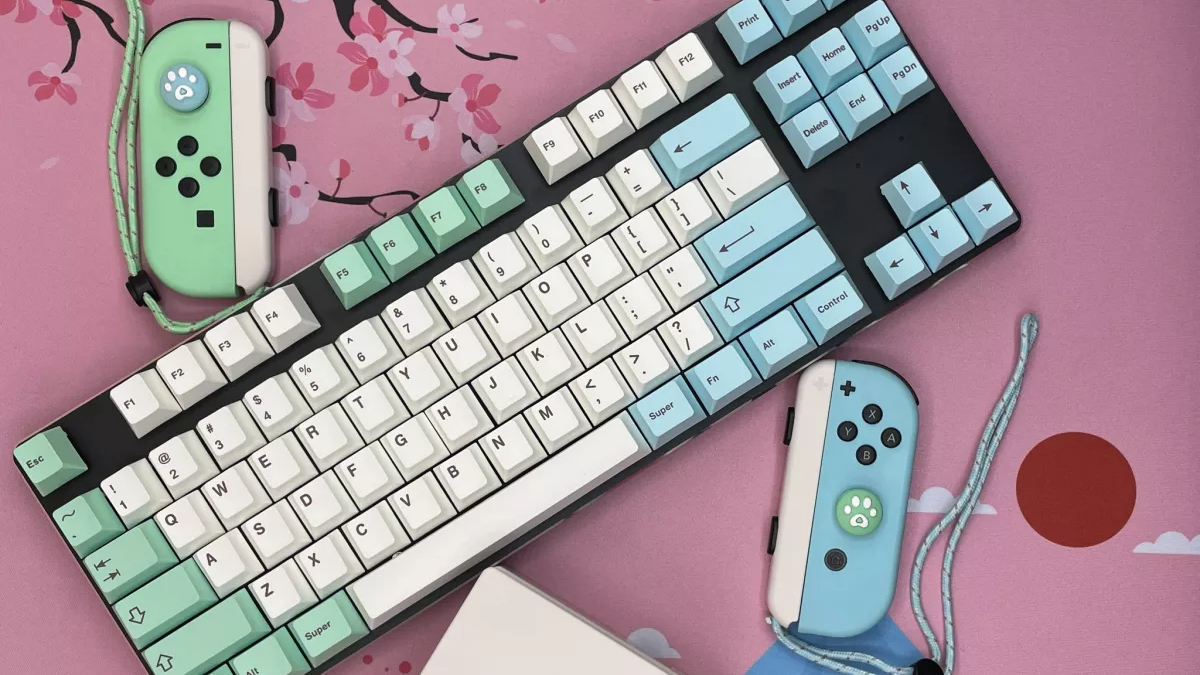
For most users, the Apple Magic Keyboard is the best keyboard for the Mac. After all, this is designed by Apple and works seamlessly with your Mac, whether it's an iMac, Mac mini, or MacBook. In addition, you won't need any additional setup to get it working as it should, so you can get to being productive immediately without tinkering around.
To top it all off, the Magic Keyboard is slim and lightweight, so you can easily take it with you anywhere since it's wireless. It is also hushed so that you won't bother people around you. And it comes in a compact layout similar to what you get on MacBooks, or you can go for a full-size version with a number pad in case you need to do a lot of data entry or calculations.
However, as great as Apple touts the Magic Keyboard to be, some people may want options for customization. Others may even want something that feels better to type on and gives tactile and audible feedback, which is why mechanical keyboards still exist. If you prefer to go the automatic route, Keychron is one of the few brands that work seamlessly with Macs without extra workarounds or setup. The Keychron K2 is one of my favorite mechanical keyboards, and it's the one that got me started with the hobby.
Sometimes you just need to customize
While there isn't anything wrong with the default option, some people need to customize their keyboard to become more productive. Remapping keys to do macros or other app functions makes your life easier andt can save you a lot of time in the long run. You should also be able to personalize your keyboard's profiles, backlight settings, and more if necessary.
With keyboards like Logitech MX Keys or G915 Lightspeed, you can use Logitech's software to create a personal, tailor-made experience just for you. Whether creating a macro or just making a cool lighting animation as you get a headshot in your game, making your keyboard your own can take things to a new level.
Remember that not every keyboard will have customization software or even extra keys that can be remapped. You'll also want to ensure that the company's software is compatible with macOS. For example, many new Razer keyboards require Synapse 3.0, which is unavailable on macOS (Razer hasn't updated Synapse past 2. x on macOS). So while you could use a Razer keyboard via plug-and-play, you won't be able to customize anything about it without a PC.
It's a personal preference, but others like mechanical keyboards
For most people, the flat, low-profile keyboards similar to what you find on laptops and the best MacBook are good enough. However, other people, like me, tend to prefer being able to feel every keystroke while typing and hearing it. For these people, mechanical keyboards exist, offering a whole new level of physical hardware (not just software) customization that you can't get with laptop-style keyboards.
With a mechanical keyboard, you can build them from the ground up or go with a solid, prebuilt board that you can customize later, from the switches to keycaps. Of course, changing out switches is easier if the board is hot-swappable, but if it's not, it's still possible, but you'll need to learn to de-solder and solder small electronic parts.
When it comes to mechanical keyboards, the type of switch underneath the keycap makes all the difference regarding typing feel and sound. Whether you want something smooth and quiet or something with more tactile feedback and a nice choccy or clicky sound to it, there's a switch out there for everyone, but it may take some time to find since there are so many. It helps if you have developed a preference for the type of switch you like: Linear (smooth, quiet), Tactile (in-between with a bump and not too loud), or Clicky (loud, clicky like a pen, and obnoxious).
Another thing with mechanical keyboards is the ability to change out your keycaps. There are many themed keycap sets out there that are readily available from retailers like Amazon or even AliExpress. But there are also "group buys," where you can purchase a kit or set for a limited amount of time, and once that window closes, it goes into production — however, the process can take several months, and sometimes even a year or longer. This is because it's a niche product and hobby, and these themed sets are not mass-produced. However, having a themed keycap set can add your taste to your keyboard and overall desk setup.
For a more in-depth look at mechanical keyboards, check out Mechanical Keyboards 101: Getting started with the basics guide.
For the general population, the Apple Magic Keyboard is a great option that will work flawlessly with your Mac. It's slim, lightweight, and compact or full-size with a number pad, so all bases are covered. But if you want something similar with a little more robust features, you can't beat the Logitech MX Keys, which allow you to customize the F-row keys and the other special buttons to whatever you need them to do.
Those who want to try out mechanical keyboards with their Mac should consider the Keychron K2 if they wish to do something compact to save desk space or the K4 if a number pad is needed. However, if you want something more standard and accommodating, then the Glorious GMMK is also good.
Master your iPhone in minutes
iMore offers spot-on advice and guidance from our team of experts, with decades of Apple device experience to lean on. Learn more with iMore!
Christine Romero-Chan was formerly a Senior Editor for iMore. She has been writing about technology, specifically Apple, for over a decade at a variety of websites. She is currently part of the Digital Trends team, and has been using Apple’s smartphone since the original iPhone back in 2007. While her main speciality is the iPhone, she also covers Apple Watch, iPad, and Mac when needed. When she isn’t writing about Apple, Christine can often be found at Disneyland in Anaheim, California, as she is a passholder and obsessed with all things Disney, especially Star Wars. Christine also enjoys coffee, food, photography, mechanical keyboards, and spending as much time with her new daughter as possible.

